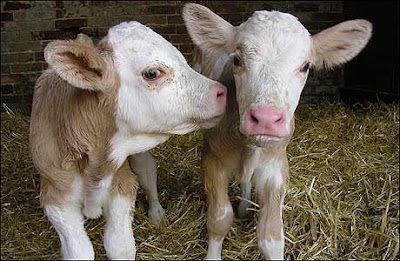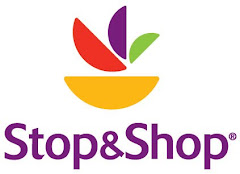I’m not much for watching “animal-sploitation” videos, but I find it hard to ignore the undercover video of workers at Hallmark Meat torturing and abusing downer cows (cows that are sick, listless and unable to walk into the slaughterhouse).
The footage is disturbing in its own right, but made more so by the revelation that meat from this facility is used in the National Lunch Program. Yep, you read it correctly - this is the meat your kids are eating in the school cafeteria. Hallmark insists they do not use meat from downer cows for schools, but this is of little comfort. It doesn’t take a rocket scientist to see that pushing fallen cows around the paddock with fork lifts, aside from being inhumane and cruel, exposes the hides to mud and fecal matter. And that means the meat that goes to our schools and everywhere else can be contaminated with E.coli and salmonella. And just to keep it all in perspective, these things can kill our kids
I wish I could tell you that I buy all our meat from farmers markets and farms where cows are grass-fed on clean pastures, treated with kindness and care and then, thoughtfully, cleanly and safely butchered. And I do sometimes. Sometimes I know exactly where our meat is coming from and I am happy about that. But it is nearly impossible (at least for me) to rise to these standards all the time. I might be able to never walk into a McDonalds again, but really, how many restaurants are going to be able to tell me exactly where their beef came from? Maybe Thomas Keller's line cook will come to my table and explain the chain of life to me at my table at Per Se, but definitely not at the little bistro a couple blocks over.
And really, finding grass-fed beef from a small farm is often inconvenient. I can get good grass-fed at
Truth be told, more times than not I end up standing in line at Pathmark with my styrofoam tray of angus – the cow that was raised in some monolithic corporate farm, tended by faceless poorly paid (and probably angry) workers with no real connection to the life/death cycle and processed in some horrifying, fecal-drenched slaughterhouse. I am ashamed of it, but too often convenience wins over healthier meat. The family needs to eat and Pathmark is right across the street. Fairway is 25 blocks away. In a pinch you know where I’m going.
And don’t even get me started on the price - organic anything and especially that small farm, grass-fed stuff is ridiculously expensive. Is it worth it? Absolutely. But that's easy for me to say - cutting into the bank account might be fine for a writer and a theatre producer who love to cook and eat and make good food a priority, maybe not so much for a single working mother of four, who wonders if she’ll make rent.
Which brings me to my point - thinking about our food, I mean really thinking about it, is a high class pursuit.
I live in
Pathmark is a suburban-sized super market (a rarity of square footage in NY) and you can buy a package of Stouffers Macaroni and Cheese that will serve, quite literally, 20 people, but you couldn't find an organic chicken to save your life. It's all Perdue, all the time. Although they have wild salmon, customers prefer the less expensive farm-raised salmon and from chatting with folks at the counter, most people seem to have little awareness of why one is better than the other. Or they know and don’t care. And really, I see so many carts heaped over with soda and overly-processed sugary foods with Dora on the label that maybe a salmon steak riddled with PCB's isn’t the worst
thing in the world.
I’m glad that chefs like David Burke, Jamie Oliver and Chris Cosentino (on his fun blog Offal Good. Check out the post where he details a humane and safe slaughter) are exposing what chefs have long known – that knowing where our food comes from makes us better eaters and cooks, that simple is better when it comes to food, cooking, nature and just about everything else in life. Maybe by butchering animals on TV shows and putting up pictures of safe and clean kills on their blogs and writing and talking openly about the process (even though the squeamish, the activists and the vegans are out in force) we will get used to thinking more about how meat gets to our table and the trickle down will make all our meals just a little tastier, healthier and humane.
xxxooo YM











2 comments:
I would love to buy grass fed beef, but seeing as how Australia is in the middle of a drought (unless you are in the flooded areas!) there is no grass about.
*Most* of our beef is free range (that I buy anyway, because I have to buy everything in advance) but grain fed.
It is exhausting, isn't it?
Cameron told me Friday night that he'd used the last of the chicken stock, and I said "that's impossible, we have gallons..." and then went to the freezer to see that he was right. We were even out of turkey stock. Yipes! Given that our only source of pastured, local chickens dried up before Thanksgiving -- and I didn't really do anything to prepare this eventuality other than making my usual batches when the bone-bag filled up -- I guess I am lucky to have made it this far into winter.
It took three grocery stops before I could find local, organic chicken backs. (I would have settled for wings, but on Super Bowl weekend, that wasn't happening.) Unless I wanted to go without stock until spring, I had to choose the lesser of various evils: the Rosie chicken parts I ended up buying come from factory organic farms -- they're local, technically, and 'free range', technically, but they're not really my idea of humane, ethical meat.
And that just one of the many food choices we made this week. And I don't even have the issue of living in Manhattan or feeding a family; I can only imagine how much more complicated that makes things.
Post a Comment